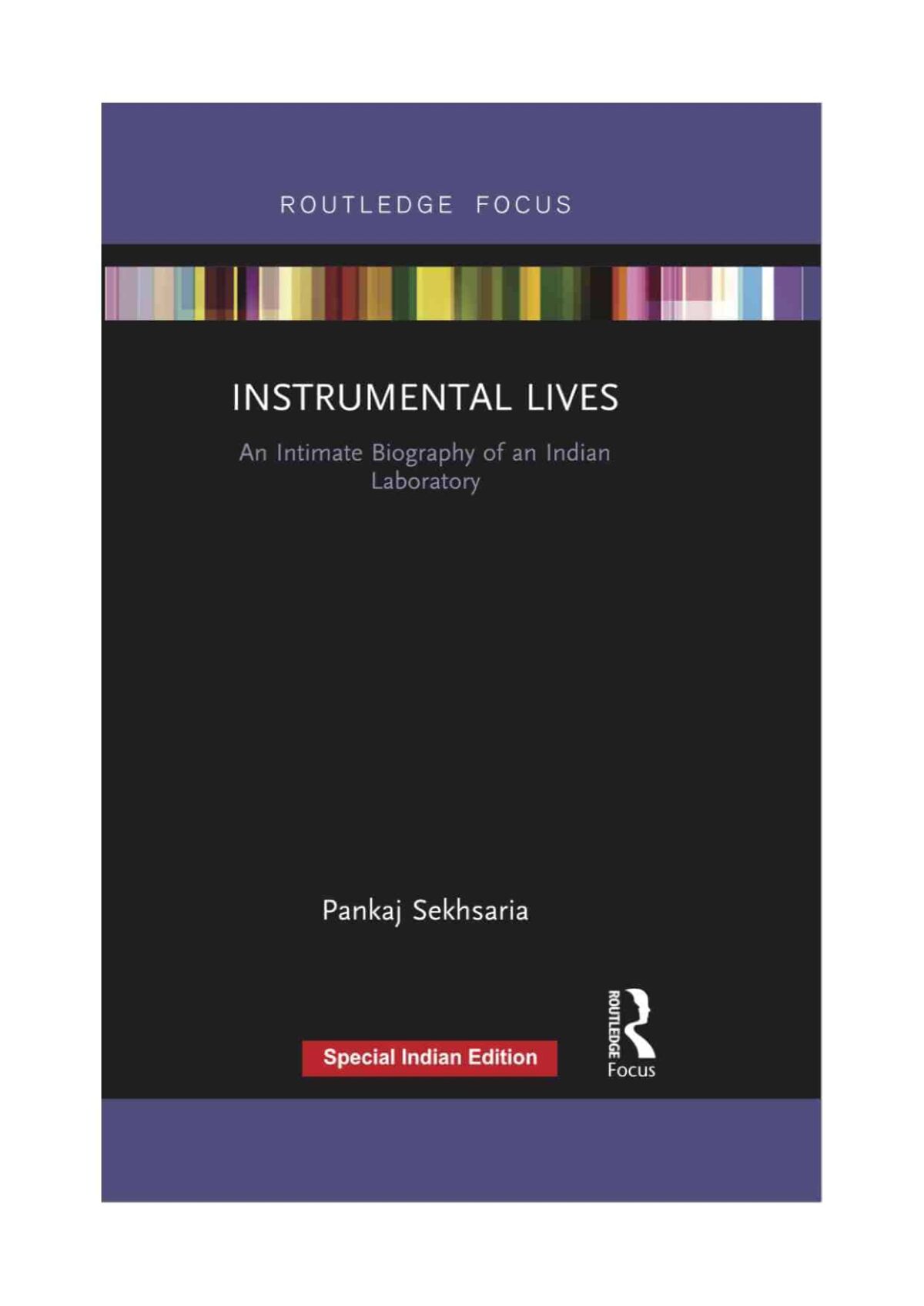Disclaimer: Instrumental Lives is about evolution of the Scanning Tunneling Microscopy Lab at the Department of Physics, a University of Pune. It is also the place where I worked for my PhD thesis. The author of the book has interviewed me as part of his research. Needless to say, I am heavily biased in my opinions about the book and the lab.
The Scanning Tunneling Microscope was developed at the Department of Physics, University of Pune in Western India by Prof. C. V. Dharmadhikari and his team, starting in 1987. STM was invented in 1981 and received Nobel Prize in Physics in 1986. Prof. Dharmadhikari developed the instrument in series of projects, dividing the complex instrument in its electronics, mechanical and software parts. As each stage was completed, another piece of jigsaw puzzle was ready.
Pankaj Sekhsaria wears many hats. He is a scientist, a journalist, a writer, an environmentalist, a photographer.. the list goes on. He has been working in the field of environment for more than two decades. Instrumental Lives is based on part of his thesis for the degree of Doctor at the Maastricht University, the Netherlands. His in-depth interview can be found here.
Instrumental Lives traces the journey of the lab from the beginning. It also introduces the concept of jugaad, a popular word in many Indian languages that does not have an equivalent in English. It has many meanings and one of them can be described as working the system to one’s advantage by using the available resources. The concept of jugaad is central to the story of STM because the instruments were developed with scarce resources, often involving ingenious solutions. For instance, STM requires a soundproof chamber to isolate the system from outside noise. Prof. Dharmadhikari used an old fridge that provided the required isolation. Jugaad is sometimes seen as a bad thing. The book quotes none other than India’s former finance minister P. Chidambaram, declaring that “Jugaad is not innovation.” As it happens, in a country like India where researchers are often faced with funding problems, jugaad is the only way to survive.
While depicting the journey of a small university lab Instrumental Lives brings forth the stark disparity in Indian science. On one hand, you have prestigious labs with practically unlimited funding, who are never held accountable for the money they spent. And on the other, you have researchers trying somehow to make both ends meet and still producing good science.
It is a well known fact that like in any other field, you need high level connections to get a decent funding for research in India. Big names who are always making the headlines sit on the funding committees and decide who will get the money, like a king ruling over his kingdom. What’s remarkable is that it is these same people who later on lament about poor quality of Indian science. During my PhD we organised a discussion on this subject and called some of the eminent personalities. I was aghast to see that not one of them was ready to take the responsibility for the poor state that we are in. And this aspect never gets any media attention because the journalists are taken in by the eminent personalities and their slogans.
As in any tragic play, Instrumental Lives has a sad ending. After Prof. Dharmadhikari retired from the University, the instruments were dismantled and dumped somewhere. Instrument that had consistently produced high quality science for over two decades were discarded without a second thought. Pankaj also interviewed Prof. A K Raychaudhury, recipient of the Shanti Swarup Bhatnagar prize, who had made a series of instruments at the Indian Institute of Science (IISc), Bengaluru. After he left for Kolkata, as Director of S N Bose National Center for the Basic Sciences, his instruments also received a similar fate.
This is the sad state of Indian science that we are in today. With no vision whatsoever, valuable instruments that have been made from public money are being dumped in junkyards and no one knows about it because most science journalists are so busy chronicling the successes and failures of ISRO that they do not even know about the existence of such problems.
Pankaj has done a remarkable job in documenting minutely the progress of the lab, its evolution and its unfortunate end. The book is a perfect example of the gap between the science achievements in India that are advertised in newspapers and the stark ground reality in university labs that do not have the luxury of getting unlimited funding reserved for prestigious institutions. This book is a must read for scientists, science journalists and amateur science fans. Hopefully, it will also serve as a cautionary tale for the big names who sit on funding committees, allocating funds to their favorite groups and then lament about the poor quality of science in India.
Instrumental Lives is available on Amazon.


